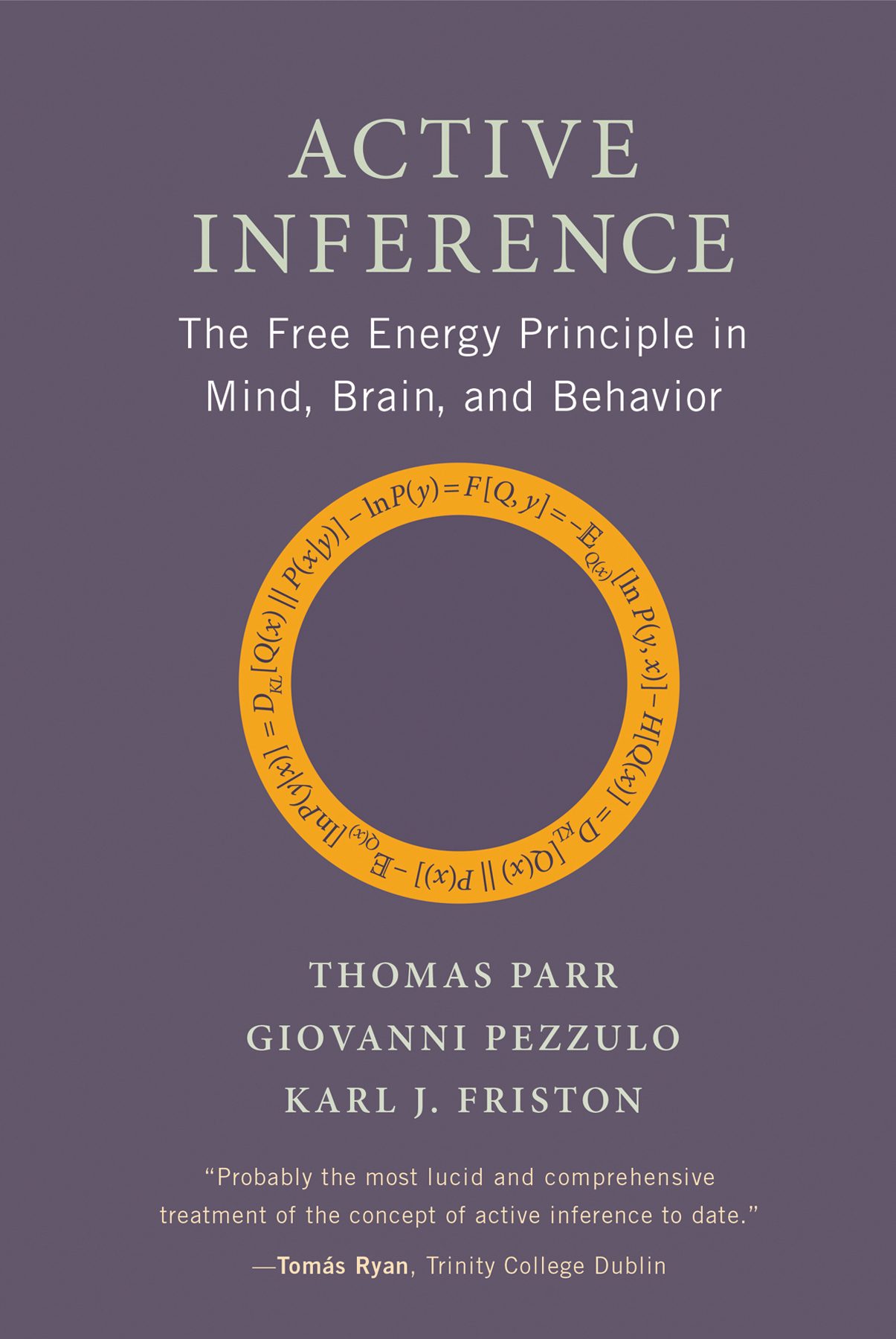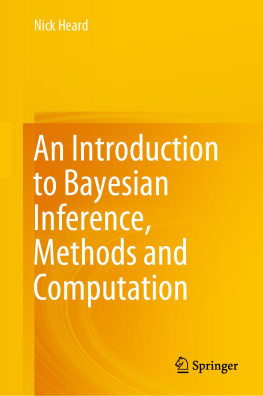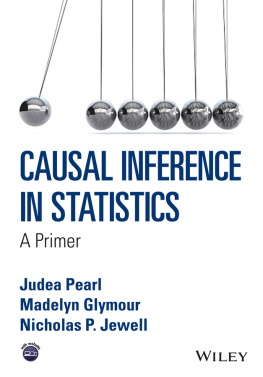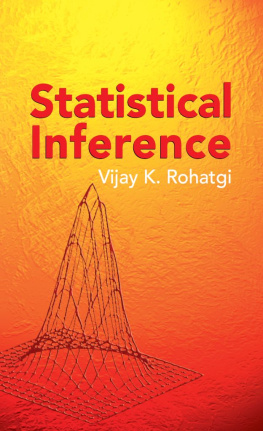Contents
Guide
Pagebreaks of the print version

Active Inference
The Free Energy Principle in Mind, Brain, and Behavior
Thomas Parr, Giovanni Pezzulo, and Karl J. Friston
The MIT Press
Cambridge, Massachusetts
London, England
2022 Massachusetts Institute of Technology
All rights reserved. No part of this book may be reproduced in any form by any electronic or mechanical means (including photocopying, recording, or information storage and retrieval) without permission in writing from the publisher.
The MIT Press would like to thank the anonymous peer reviewers who provided comments on drafts of this book. The generous work of academic experts is essential for establishing the authority and quality of our publications. We acknowledge with gratitude the contributions of these otherwise uncredited readers.
Library of Congress Cataloging-in-Publication Data
Names: Parr, Thomas, 1993 author. | Pezzulo, Giovanni, author. | Friston, K. J. (Karl J.), author.
Title: Active inference : the free energy principle in mind, brain, and behavior / Thomas Parr, Giovanni Pezzulo, and Karl J. Friston.
Description: Cambridge, Massachusetts : The MIT Press, [2022] | Includes bibliographical references and index.
Identifiers: LCCN 2021023032 | ISBN 9780262045353 (hardcover)
Subjects: LCSH: Perception. | Inference. | Neurobiology. | Human behavior models. | Knowledge, Theory of. | Bayesian statistical decision theory.
Classification: LCC BF311 .P31366 2022 | DDC 153dc23
LC record available at https://lccn.loc.gov/2021023032
d_r0
Contents
- List of Figures
An action-perception cycle reciprocally connecting a creature and its environment. The term environment is intentionally generic. In the examples that we discuss, it can include the physical world, the body, the social environment, and so on.
Two roads to Active Inference: the high road (starting from top-right) and the low road (starting from bottom-left).
A simple exampe of Bayesian inference. Upper left: The organisms prior belief P(x) about the object it will see, before having made any observations, i.e., a categorical distribution over two possibilities, apple (with probability 0.9) and frog (with probability 0.1). Upper right: The organisms posterior belief P(x | y) after observing that the object jumps. Posterior beliefs can be computed using Bayes rule under a likelihood function P(y | x). This is shown below the prior and posterior, and specifies that if the object is an apple, there is a very small probability (0.01) that it will jump, while if it is a frog, the probability that it will jump is much higher (0.81). (The probability bars in this figure are not exactly to scale.) In this specific case, the update from prior to posterior is large.
Generative process and generative model. Both represent ways in which sensory data (y) could be generated given hidden states (x) and are represented through arrows from x to y to indicate causality. The difference is that the process is the true causal structure by which data are generated, while the model is a construct used to draw inferences about the causes of data (i.e., use observations to derive inferred states). The hidden states of the generative model and the generative process are not the same. The organisms model includes a range of hypotheses (x) about the hidden state, which do not necessarily include the true value of the hidden state x of the generative process. In other words, the models we use to explain our sensorium may include hidden states that do not exist in the outside world, and vice versa. Action (u) is generated on the basis of the inferences made under a generative model. Action is shown here as part of the generative process, making changes to the world, despite being selected from the inferences drawn under the model.
Both perception and action minimize discrepany between model and world.
Variational free energy as an upper bound on negative log evidence.
Complementary roles of perceptin and action in the minimization of variational free energy.
Various schemes that can be derived by removing terms from the free energy equation. The upper panel shows the terms contributing to the expected free energy. The lower panels show the schemes that result from removing prior preferences (1), ambiguity (2), or everything except for the prior preferences. Each of these quantities appears in several different fields under a variety of names, but all can be seen as components of the same expected free energy.
A dynamc Markov blanket, which separates an adaptive system (here, the brain) from the environment. The dynamics of each set of states are determined by a deterministic flow specified as a function (f) giving the average rate of change and additional stochastic (random) fluctuations (). The arrows indicate the direction of influence of each variable over the rates of change of other variables (technically, the nonzero elements of the associated Jacobians). This is just one example; one can use a Markov blanket to separate an entire organism from the environment or nest multiple Markov blankets within one another. For example, brains, organisms, dyads, and communities can be conceived in terms of different Markov blankets that are nested within one another (see Friston 2019a; Parr, Da Costa, and Friston 2020 for a formal treatment). Confusingly, different fields use different notations for the variables; sometimes, sensory states are denoted s, external states , and active states a. Here we have chosen variables for consistency with the other chapters in this book.
Association between average internal states of a Markov blanket and distributions of external states. Top: Assuming a linear Gaussian form for the conditional probabilities, these plots show samples from the conditional distribution over external and internal states, respectively, given blanket states. The thick black lines indicate the average of these variables given the associated blanket state. Bottom left: The same data are plotted to illustrate the synchronization of internal and external states afforded by sharing a Markov blankethere, an inverse synchronization. The dashed lines and black cross illustrate that if we knew the average internal state (vertical line), we could identify the average external state (horizontal line) and the spread around this point. Bottom right: We can associate the average internal state with a distribution over the external state.
Left: Pah taken by a 2-dimensional random dynamical system with a (nonequilibrium1) steady state. This can be interpreted as minimizing its surprise, which is shown in the contour plot on the right. Right: The center is the least surprising region; the circles moving away from the center represent progressively more surprising regions. Middle: In contrast, this plot shows the trajectory of a system starting in the same place (5, 5), with random fluctuations of the same amplitude, whose dynamics bear no relation to surprise. Not only does it enter more surprising regions of space; it also fails to achieve any sort of steady state, dissipating in an unconstrained fashion over time. The scope of Active Inference is restricted to systems like that on the leftwhich counter random fluctuations with their average flow and thereby retain their form over time.







